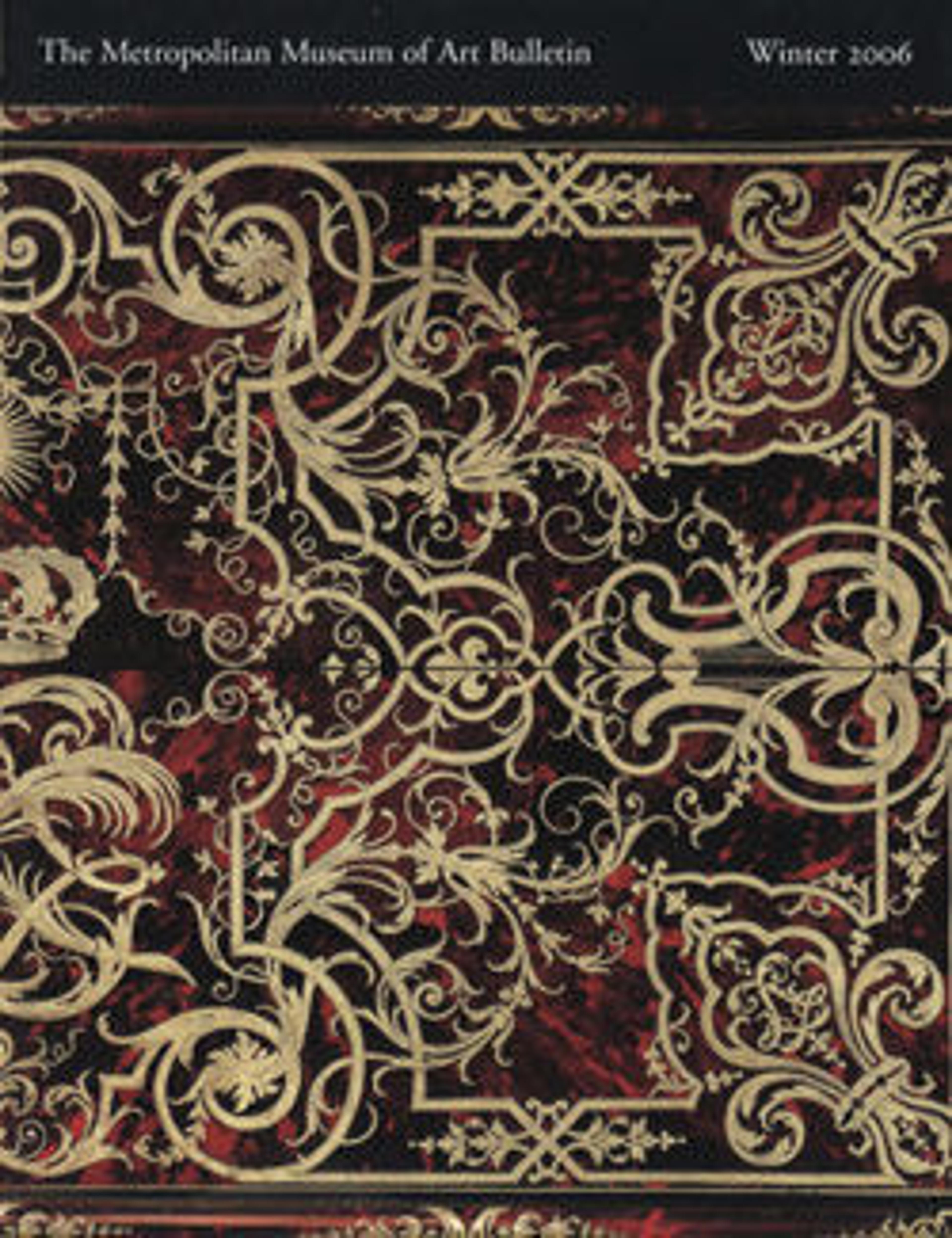Folding stool (pliant) (one of a pair)
Stools played an important role in the hierarchical seating arrangements of the French court, which followed a strict and complex protocol. Depending on the rank of the company–which would include members of the royal family, courtiers, and dignitaries–one remained standing or was assigned a floor cushion (carreau), stool, or, rarely, a side chair. Armchairs were reserved for the king and the queen. Large numbers of stools were listed in the royal inventories; one type, called pliant, which includes the present pair, had an X-shaped frame that could conveniently be folded.
The inventory mark of the palace of Versailles, an interlaced double V and a closed crown, is stamped underneath the lower struts of the Museum’s stools. Even though the authenticity of these marks has been questioned, the excellent quality of the work, expressed not only in the carving but also in the recutting (reparure) of the gesso, leaves no doubt that this pair belonged to an important set of seat furniture.
Consisting of calcium carbonate mixed with rabbit glue, gesso or whiting forms the base coat for the gilding. After it has been applied to a carved frame and has dried, this layer needs to be recut to restore detail or definition to the decoration. Motifs or ground patterns too delicate to be cut into the wood itself, such as the diaper design on the Museum’s stools, were also added during the reparure. Despite the fact that the appearance of these low seats depended largely on the richness of the upholstery and trimmings of their cushions, the frames of the stools were elaborately carved with Rococo ornament. The shaped outline of the supports is enlivened with bulrushes, basketweave motifs, and partly openworked acanthus leaves. Large rosettes cover the bolts that allow the stools to fold.
The inventory mark of the palace of Versailles, an interlaced double V and a closed crown, is stamped underneath the lower struts of the Museum’s stools. Even though the authenticity of these marks has been questioned, the excellent quality of the work, expressed not only in the carving but also in the recutting (reparure) of the gesso, leaves no doubt that this pair belonged to an important set of seat furniture.
Consisting of calcium carbonate mixed with rabbit glue, gesso or whiting forms the base coat for the gilding. After it has been applied to a carved frame and has dried, this layer needs to be recut to restore detail or definition to the decoration. Motifs or ground patterns too delicate to be cut into the wood itself, such as the diaper design on the Museum’s stools, were also added during the reparure. Despite the fact that the appearance of these low seats depended largely on the richness of the upholstery and trimmings of their cushions, the frames of the stools were elaborately carved with Rococo ornament. The shaped outline of the supports is enlivened with bulrushes, basketweave motifs, and partly openworked acanthus leaves. Large rosettes cover the bolts that allow the stools to fold.
Artwork Details
- Title: Folding stool (pliant) (one of a pair)
- Date: ca. 1735–39
- Culture: French, Paris
- Medium: Carved and gilded walnut; silk velvet with gold trim (not original)
- Dimensions: H. 17-3/4 x W. 23 x D. 16-1/2 in. (45.1 x 58.4 x 41.9 cm)
- Classification: Woodwork-Furniture
- Credit Line: Gift of Mr. and Mrs. Charles Wrightsman, 1971
- Object Number: 1971.206.10
- Curatorial Department: European Sculpture and Decorative Arts
More Artwork
Research Resources
The Met provides unparalleled resources for research and welcomes an international community of students and scholars. The Met's Open Access API is where creators and researchers can connect to the The Met collection. Open Access data and public domain images are available for unrestricted commercial and noncommercial use without permission or fee.
To request images under copyright and other restrictions, please use this Image Request form.
Feedback
We continue to research and examine historical and cultural context for objects in The Met collection. If you have comments or questions about this object record, please contact us using the form below. The Museum looks forward to receiving your comments.
